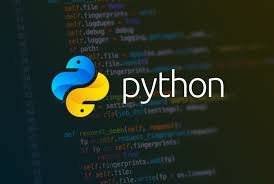Hello Curious Coders,
In this article we are going to discusss about Python which is a popular High Level, Interpreted and Object Oriented Programming Language and evolving it’s significance in different domains of this era.

Need of Programming Language
As we know python is a programming lanaguage but let’s discuss the need of programming lanaguage in software developers life. So the Programming langauge are used in
Automating tasks: Programming languages enable developers to write code that can automate repetitive tasks, such as file processing, data entry, and system administration tasks. This can save time and reduce the risk of errors caused by manpower.
Software Development: Programming languages are used to develop software applications, from simple scripts to complex enterprise-level systems. Developers use programming languages to design and implement the logic of an application and to communicate with databases, APIs, and other systems.
Data Analysis: Programming languages are used to analyze and process large amounts of data, such as scientific data, financial data, and business data.
- Device Controlling: Programming languages are used to control devices such as robots, drones, and IoT devices and many more….
Let’s dive into History and Features of Python…
History of Python
- Python was created in the late 1980s by Guido van Rossum, a Dutch computer programmer. Van Rossum began working on Python in December 1989, while he was working at the National Research Institute for Mathematics and Computer Science in the Netherlands. He created Python as a successor to the ABC language, which was designed to be easy to learn and use.
- Van Rossum released the first version of Python, version 0.9.0, in February 1991. The language was named after the comedy troupe Monty Python, which van Rossum was a fan of. Python quickly gained popularity among developers for its simplicity and ease of use, and a community of developers began to grow around the language.
- In 1994, van Rossum founded the Python Software Foundation, a non-profit organization dedicated to the development and promotion of Python. The foundation continues to support the development of Python to this day.
Features of Python
Simple and Easy to Learn: Python has a clear and concise syntax, making it easy for beginners to learn and write code. Its simplicity also makes it a popular choice for rapid prototyping and development.
Interpreted Language: Python is an interpreted language, which means that it does not require compilation before execution. This makes it faster to develop and easier to debug than compiled languages.
Cross-platform Compatibility: Python code can be run on a wide range of platforms including Windows, Linux, and macOS. This means that Python code can be developed and run on multiple operating systems without modification.
Large Standard Library: Python has a large standard library of modules and packages, providing developers with a wide range of functionality for tasks such as file I/O, networking, and data processing.
Object-Oriented: Python is an object-oriented language, allowing developers to create reusable code and easily manage complex programs.
- Dynamically Typed Language: Python is dynamically typed, meaning that variable types are determined at runtime. This makes it flexible and easy to use, but can also lead to some errors if not used carefully.
On a conclusion note, Python is a powerful and flexible programming language with a wide range of features that make it a popular choice for developers of all levels.
Hey Curious Coder stay tuned to codewithcurious.com for blogs related to Python….
